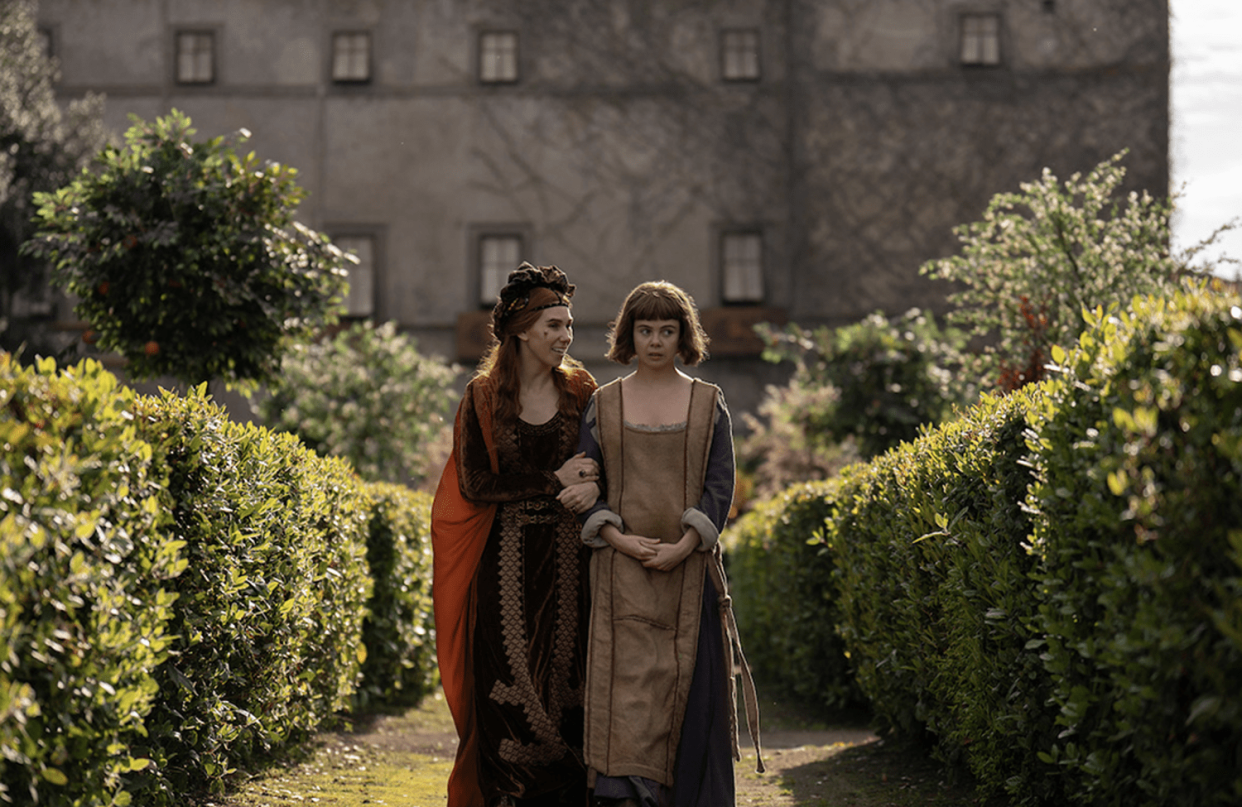Why Zosia Mamet and 'The Decameron' creator got matching rat tattoos

When asked for an elevator pitch to describe her new show "The Decameron," creator and showrunner Kathleen Jordan kept it simple: "Chaos ensues."
Starring Zosia Mamet, Tony Hale and more, the show is an anachronistic romp set in 1348 amid the bubonic plague.
The show gets its name from Giovanni Boccaccio's “The Decameron."

Here's everything to know about the Netflix show, which premiered July 25.
Is ‘The Decameron’ based on a true story?
No, like its source material, "The Decameron" is fictional.
“The Decameron” is a 14th-century short story collection framed as stories within a story.
In the frame narrative, a group of Italian nobles flee to a country villa in an attempt to escape the plague. To entertain themselves, they tell each other tales about the scandalous deeds of nuns, peasants and fellow nobles.
In Jordan's modern retelling, the show focuses less on storytelling and more on how the nobles and their servants navigate the vast social disruption caused by the plague. While holed up in the villa, their unspoken resentments, secret desires and hidden agendas begin to unfold as the death toll rises.
Jordan said she immediately saw common themes between the era of “The Decameron” and the beginning of the COVID-19 pandemic.
“The text was something that people were talking about during the pandemic as sort of a piece of art that examines human behavior in history around pandemics,” Jordan said at the show’s premiere on July 24.
But in her version, Jordan chose to spotlight the stories of both nobles and servants.
“There’s such a dissonance between real people and this upper echelon of the wealthy,” she said. “I wanted to find a way to explore the difference between the haves and the have nots.”
This tension is evident in the show. While people die in plague-ridden cities, the nobles decamp to the sumptuous Villa Santa for some rest and relaxation. However, even the nobles’ wealth and privilege can’t fully shield them from the effects of societal collapse.
Hale, who plays the villa’s steward Sirisco, saw similarities between the “fear and uncertainty” of the plague and the beginning of the COVID-19 pandemic.
“I remember when the pandemic started, we were all washing down our groceries, and now we look back at that thinking, ‘Wow, what?’” he tells TODAY.com. “But no one knew. Like in the show, they’re carrying garlic around, they’re doing all the flowers and all this stuff. It was interesting to kind of see a little of those parallels.”
It's important to note, lest the story sound too bleak, “The Decameron” is also uproariously funny.
Mamet, who plays tempestuous noble Pampinea, recalls breaking character in several scenes due to the cast’s hilarity.
“The whole cast was amazing,” she tells TODAY.com. “I would often forget in scenes that I had lines, because I would just be watching them.”
She describes co-star Saoirse-Monica Jackson, who plays Pampinea’s devoted servant Misia, as “one of the funniest humans I’ve ever experienced in my life.”
“She is just such a powerhouse,” Mamet says. “She’s such an incredible scene partner and actor.”
Just before filming for the show wrapped, Mamet, Jordan and Tanya Reynolds got matching flower tattoos, inspired by a scene in which Reynolds' character attempts to avoid the plague by sticking flowers up her nose.
Upon their return to the U.S., Mamet and Jordan also got matching tattoos of plague rats. (Jackson declined to get either tattoo — getting a belly button piercing had been more than enough for her mother to handle, she said.)
Though the cast brought their modern sensibilities — and accents — to the show, Mamet recalls getting swept up in the setting while filming at the villa.
“It made us feel a bit like we were in 1348: no electricity, standing barefoot in the dirt," she says. "The minute we would put on those costumes and I would put on those headpieces and the wig down to my butt, it felt like we were all sort of immediately transported. The whole experience was pretty wild."
This article was originally published on TODAY.com
